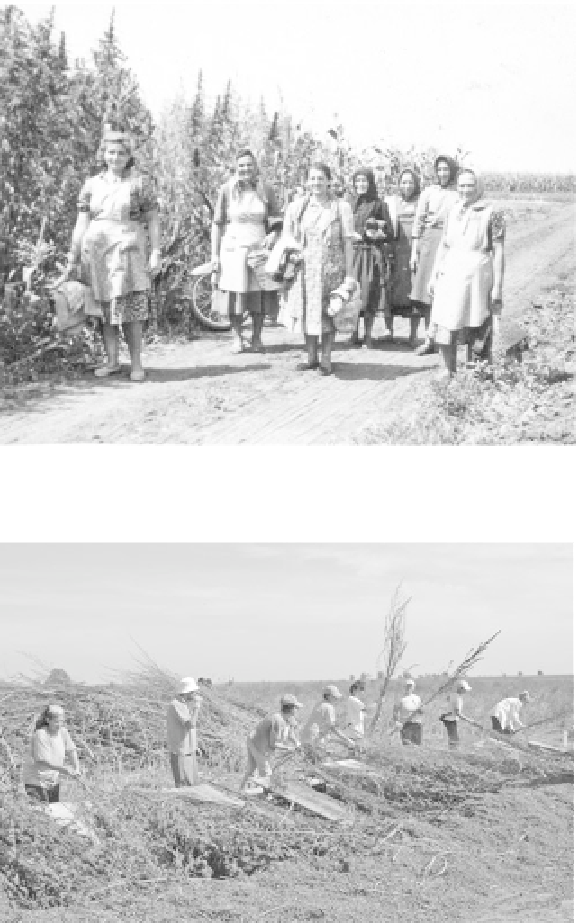Agriculture Reference
In-Depth Information
Institute of Field and Vegetable Crops in Novi
Sad (Berenji and Sikora, 1996). Currently,
there are three officially registered high-
yielding, low THC industrial hemp cultivars on
the Serbian variety list: Marina (dioecious),
Helena (monoecious) and Diana (F1 hybrid).
These cultivars were developed at the Institute
of Field and Vegetable Crops in Novi Sad and
all were approved officially in 2002.
In the past, hemp seed traditionally was
grown by planting several hemp plants at the
end of cornfields, as shown in Fig. 20.3. Certified
hemp seed production is now organized by the
Institute of Field and Vegetable Crops in Novi
Sad. Hemp seed production is contracted out
with private farmers, who grow hemp in small
fields (1-2 ha). Production is based almost com-
pletely on manual labour. The seed crop is sown
at a row-to-row distance of 70 cm, 20-30 cm in
the row. Starting from the time of pollination of
dioecious cultivars, the identified male plants are
removed. The crop is cut by sickles, dried in
sheaves in the field and threshed by beating the
tops of a few plants against an angled wooden
board (Fig. 20.4). The seed is then collected,
cleaned and bagged. The fibre-rich stalks left
behind after threshing are usually sold as fuel or
simply burned in the field.
Fig. 20.3.
The traditional way of hemp seed production, growing a few plants at the end of cornfields
(shown left, in the background of the group) (15 August 1960).
Fig. 20.4.
Hand threshing of seed hemp.

